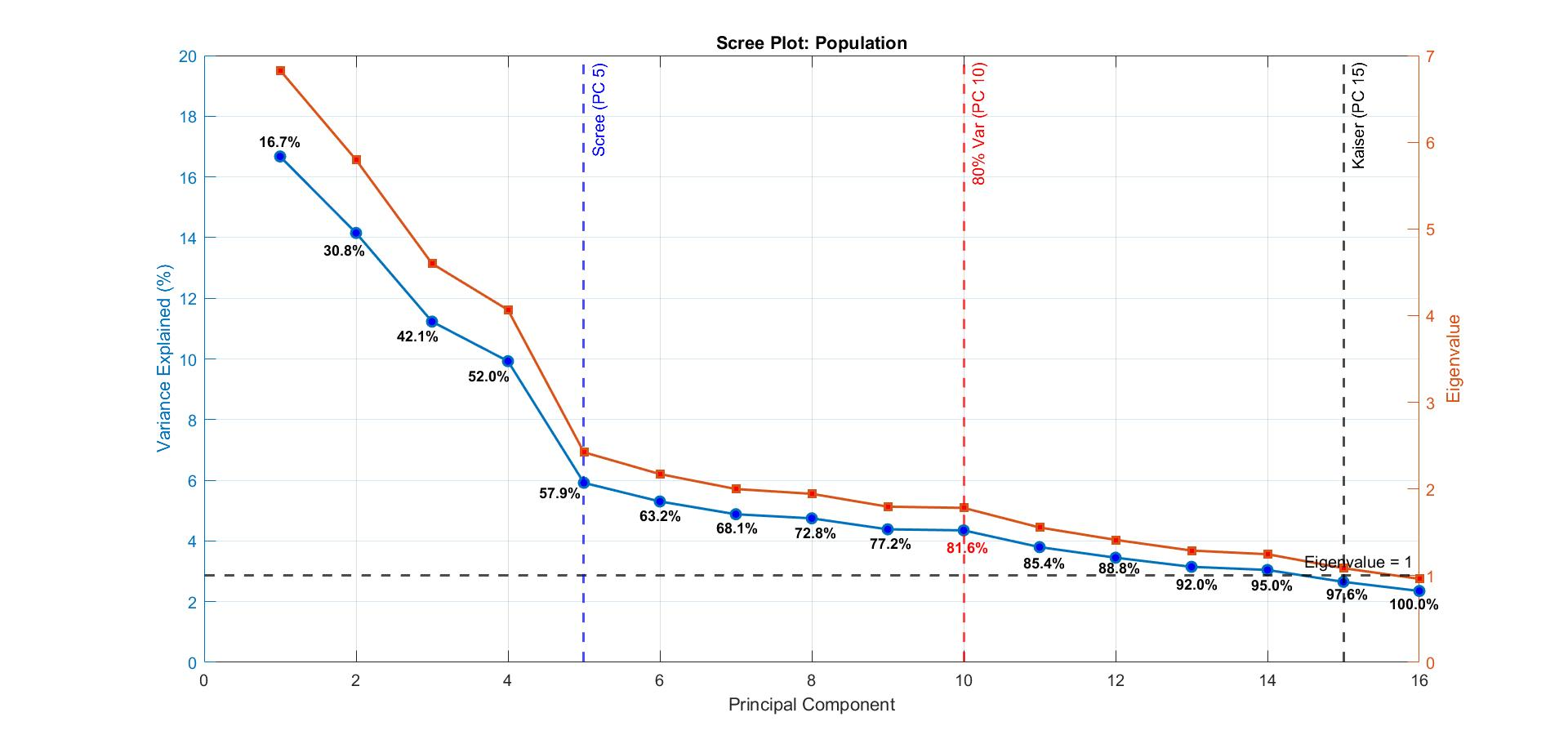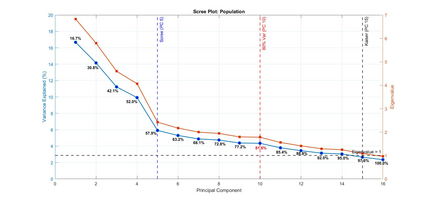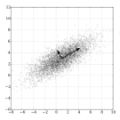PCA is widely used in health and care research to analyze complex HD datasets, such as patient health records, genetic data, and medical imaging. By reducing dimensionality, PCA helps identify key patterns and trends, which can aid in disease diagnosis, treatment optimization, and the discovery of new biomarkers. However, the primary goal of any dimensional reduction technique is to reduce the dimensionality in a data set while keeping the essential information and variability. There are a few ways to do this in practice, such as the Kaiser-Guttman criterion, Cattell's Scree Test, and the percent cumulative variance approach. Unfortunately, the results of these methods are entirely different. That means using inappropriate methods to find the optimal number of PCs retained in PCA may lead to misinterpreted and inaccurate results in PCA and PCA-related health and care research applications. This contradiction becomes even more pronounced in HD settings where n < p, making it even more critical to determine the best approach. Therefore, it is necessary to identify the issues of different techniques to select the optimal number of PCs retained in PCA. Kaiser-Guttman criterion retains fewer PCs, causing overdispersion, while Cattell's scree test retains more PCs, compromising reliability. The percentage of cumulative variation criterion offers greater stability, consistently selecting the optimal number of components. Therefore, the Pareto chart, which shows both the cumulative percentage and the cut-off point for retained PCs, provides the most reliable method of selecting components, ensuring stability and enhancing PCA effectiveness, particularly in health-related research applications.
翻译:暂无翻译





